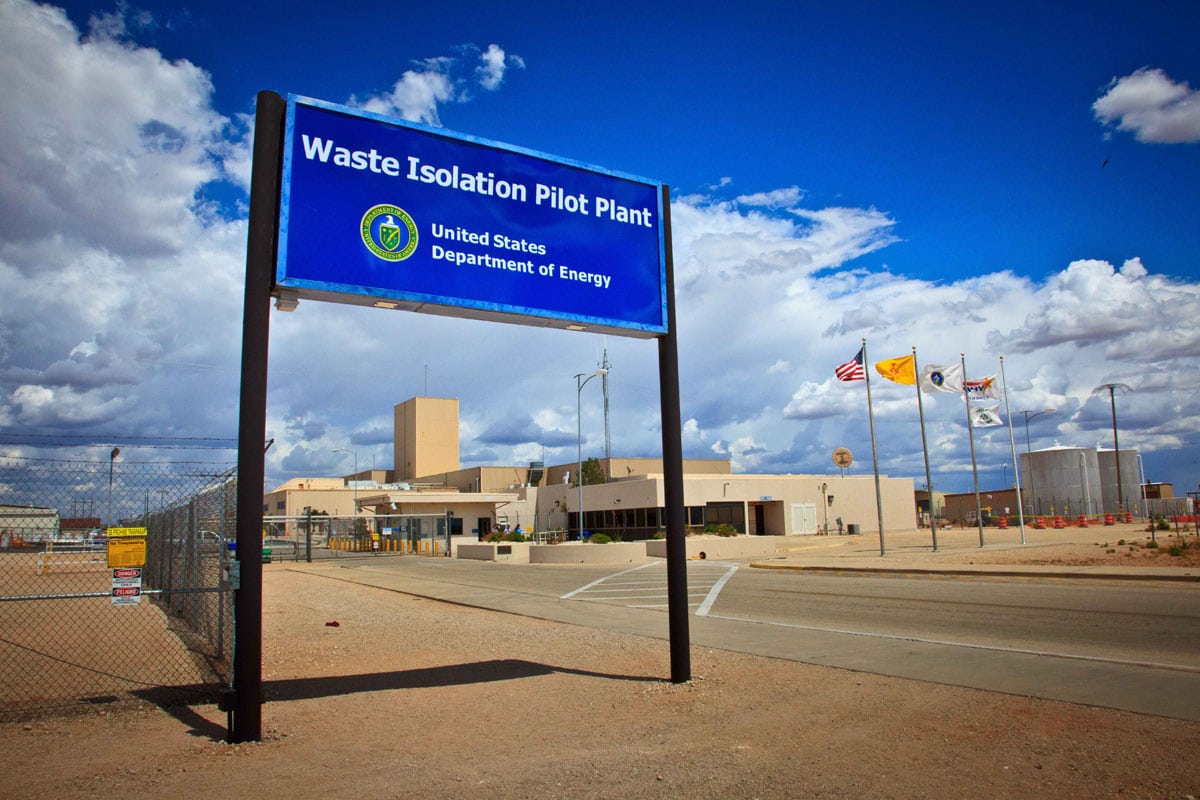
The National Nuclear Security Administration (NNSA) this week revealed new details about its proposed dilute-and-dispose plan to eliminate 34 metric tons of weapon-usable plutonium — including that the agency is close to beginning a yearlong environmental review of its new approach.
The agency will release its draft dilute-and-dispose supplemental environmental impact statement “in the very near future,” Paloma Richard, NEPA document manager in the NNSA’s Office of Material Disposition, told a National Academies panel in Washington, D.C.
The agency plans to publish the final version of the document “towards the end” of 2020, after at least three public meeting, Richard said. The NNSA will host the meetings near the Los Alamos National Laboratory in New Mexico, the Savannah River Site in Aiken, S.C., and the Waste Isolation Pilot Plant (WIPP) near Carlsbad, N.M. The three sites will play key roles in dilute-and-dispose.
The plutonium is to be eliminated under a 2000 U.S.-Russian agreement. Dilute-and-dispose would replace the now-terminated plan to convert the material into reactor fuel at Savannah River.
Los Alamos would chemically alter the plutonium, which the Savannah River Site would then blend with a classified, concrete-like material called stardust that would be buried deep underground at WIPP.
Last year, DOE Secretary Rick Perry said dilute-and-dispose will cost about $20 billion through 2050. The NNSA requested $79 million for the program in fiscal 2020, which begins Oct. 1. The funding would pay for design studies, along with equipment such as new glove boxes for Savannah River, which technicians eventually would use to prepare the plutonium-stardust mixture to be buried at WIPP.
At the National Academies meeting, another NNSA official said dilute-and-dispose will need three new glove boxes, all of which will be designed specifically for the program. Two of these will run for 40 weeks out of the year, said Tom Cantey, surplus plutonium disposition program manager at the Office of Material Disposition.
“We’re only assuming that we’re going to use two of those glove boxes at any one time,” Cantey said. “We’re going to have the third as an installed spare, in case one of those glove boxes goes down.”
The NNSA must get rid of the 34 metric tons of plutonium as part of a now-moribund arms-control agreement with Russia that was finalized in 2010, and from which Moscow suspended its participation in 2016. Both countries have said they will still deweaponize the plutonium covered by the Plutonium Management and Disposition Agreement.
The NNSA initially planned to convert the material into commercial reactor fuel using the Mixed Oxide Fuel Fabrication Facility at Savannah River. The agency decided the facility was too expensive and, after protracted legal and political fights, canceled it in October.
The NNSA said the Mixed Oxide Fuel Fabrication Facility would cost $50 billion to build and operate, excluding the $5 billion or so already spent on the partially built plant. Now, the NNSA wants to convert what it has built into a factory that can annually produce 50 fissile warhead cores called pits by 2030.
The supplemental environmental impact statement will outline the environmental effect of practicing dilute and dispose for almost 30 years, including the effects of shipping the material to WIPP. The statement will supplement previous NNSA environmental reviews, including for a smaller-scale dilute and dispose operation now underway at Savannah River, and for WIPP.
The National Academies last year told the NNSA to consider a more in-depth environmental review called a programmatic environmental impact statement — advice on which the agency has apparently passed.
Meanwhile, DOE writ large has a major hurdle to overcome at WIPP. New Mexico’s congressional delegation has said it will take an act of Congress to allow the agency to mine out enough additional space at the deep-underground repository to accommodate all the diluted plutonium the NNSA plans to put there.
Even former Energy Secretary Ernest Moniz, who got the ball rolling on dilute-and-dispose late in the Barack Obama administration, has said it will probably take a change of law to make the planned disposal project work.
Once WIPP can process 17 shipments per week of transuranic waste from around the Cold War nuclear-weapon complex, the NNSA estimates that shipments from Savannah River will take up four of those weekly slots, Cantey said. Those slots might or might not all be filled by dilute-and-dispose waste, he added. The site already sends waste to WIPP, including some transuranic waste from the existing, small-scale plutonium dilution program.
Assuming dilute-and-dispose gets off the ground, the NNSA might even consider some monitoring of the disposal process by the United Nations’ International Atomic Energy Agency, said Kevin Veal, director of the NNSA’s Office of International Nuclear Safeguards.
When the Bill Clinton administration declared 200 metric tons of plutonium excess to national defense needs in 1993, the U.S. agreed to eventually place the material under International Atomic Energy Agency safeguards. The U.S. and the U.N. cooperate on international monitoring of American nuclear materials under the the 1980 U.S.-IAEA Safeguards Agreement.
The NNSA has not yet asked the International Atomic Energy Agency to cooperate on a monitoring program for every step of dilute-and-dispose, but it might do so in the future, Veal told the National Academies panel.
Offering a hypothetical example of how the monitoring could work, Veal said the International Atomic Energy Agency might begin tracking former defense plutonium once it is rendered from weapon-usable pits into an unclassified form such as plutonium oxide for blending with stardust at Savannah River. The U.N. nuclear watchdog might also consider a simple remote monitoring system for the waste once it is buried at WIPP, such as a sensor that would sound an alarm if a container in the underground was opened.